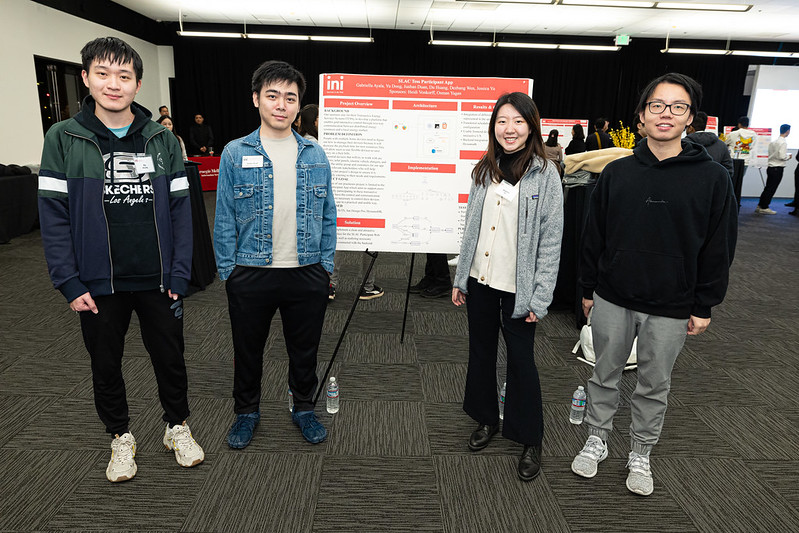Improving Transactive Energy Systems (TESS) to simplify home energy management
Hope Reveche
Jun 5, 2023

CMU-Silicon Valley students stand with their TESS presentation poster.
As the world increasingly implements devices such as solar panels and electric vehicle chargers in the home, consumers are faced with the issue of managing multiple interfaces all at once. Six CMU master’s students from the Information Networking Institute (INI), sponsored by members of SLAC (Stanford’s National Accelerator Laboratory), worked on the lab’s Transactive Energy Service System (TESS) as part of their INI curriculum. The students gained real-world experience working in the transactive energy industry, and the project culminated with the presentation of their work at the annual INI practicum showcase in December 2022.
The TESS Participant app allows users to have grid-interactive control over their energy-using devices through two-way communication between distributed energy resources and the local energy market. As part of their project, the students aimed to improve the web application’s user interface and user experience components, as well as better connecting the frontend to the backend data. By being able to control multiple devices from one place, this platform would help customers save money on their energy bills and decrease the payback time for new resources. Ultimately, this helps the entire system address the recent changes in the electricity market such as the policy mandates for greenhouse gas reduction while also providing an easy-to-use, end-to-end framework for consumers.
"I personally found the project very interesting because the future will be one where we have many features in the home run by electricity," says Junhuan Duan, one of the CMU team members. "So, it is very important to have a system that is able to manage our electrical or energy use and tells us how much energy we use and how much we need to pay each month. By creating this kind of application, I think it gives you more controllable usage of energy."
It is very important to have a system that is able to manage our electrical or energy use and tells us how much energy we use and how much we need to pay each month. By creating this kind of application, I think it gives you more controllable usage of energy.
Junhuan Duan, CMU-Silicon Valley student
The team was one of three groups to work on TESS as part of the practicum, all focusing on different fields, but based on one large project: improving the TESS platform. "The next step would be to integrate all of the projects together since they were all part of this one system. Their combination will be a larger solution for the energy and electric needs of customers," says another team member, Du Huang.
This project was a useful segue into the workforce as it gave the students the opportunity to use a hands-on approach while learning about new technologies, collaborate with sponsors, and work as part of a team to solve a problem. The students were somewhat familiar with programming tools already, but they had the chance to expand upon their knowledge and saw the real-world applications of softwares such as AWS Amplify, DynamoDB, and Python.
"Working on this project in a project manager role helped me establish team communications and the collaboration among sponsors, team members, and professors," says team member, Jessica Yu. "It also helped expose me to the new industry of transactive energy."
Now, as the students transition into the working world, they feel more prepared and knowledgeable with this experience under their belt.